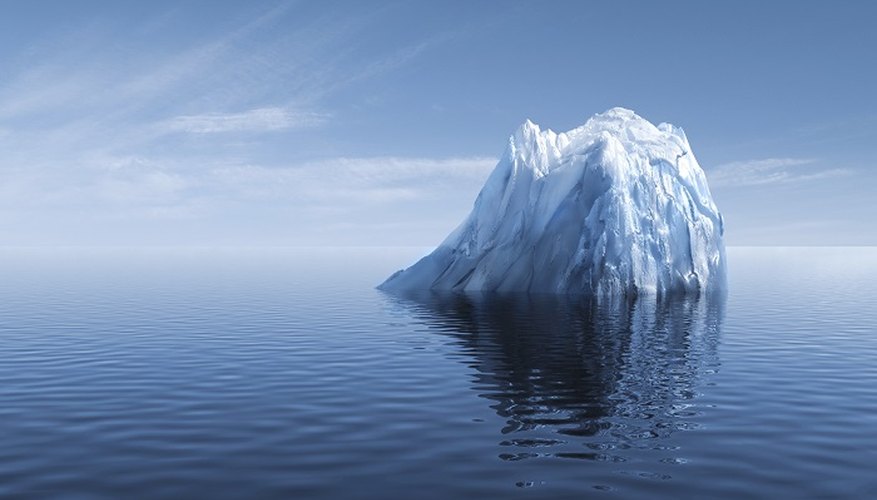Whether for a project on sea travel, the Titanic or icebergs specifically, crafting a 3D model of an iceberg can help schoolchildren absorb and understand the structure of this natural phenomenon. Students can work in teams to build large models, or individually to build smaller paper replicas of icebergs. Transforming paper into papier mache will create a sturdy and easily moulded medium for crafting the iceberg model.
- Whether for a project on sea travel, the Titanic or icebergs specifically, crafting a 3D model of an iceberg can help schoolchildren absorb and understand the structure of this natural phenomenon.
- Transforming paper into papier mache will create a sturdy and easily moulded medium for crafting the iceberg model.
Mix 3/4 of a cup of glue with a 1/4 cup of water and tear the newspaper into 2.5 cm wide strips, approximately 8 cm long.
Crumple and fold a piece of cardboard into a pyramid shaped, iceberg base.
Dip the newspaper strips into the papier mache mixture and layer on top of the cardboard to coat. Allow to dry completely after every four layers of newspaper you apply before adding more layers.
Create a jagged, pyramid shaped mound by applying the papier mache. The overall shape will be triangular; however, the surface of an iceberg is not smooth. Don't be afraid to create smaller, jagged mounds on the overall pyramid shape.
Tear narrow strips of plain paper for the final coat, which can make painting the whitish-blue iceberg easier than painting over black and white newspaper. Dip the strips into the papier mache mixture and cover the iceberg shape entirely.
- Create a jagged, pyramid shaped mound by applying the papier mache.
- Tear narrow strips of plain paper for the final coat, which can make painting the whitish-blue iceberg easier than painting over black and white newspaper.
Allow the model to dry completely before painting. Mix blues and whites together and paint the entire structure with these colours.
